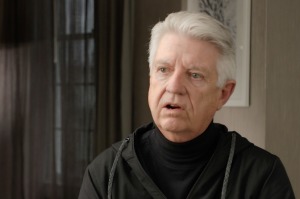Energizers and De-energizers
The Energizer Bunny has his own website and his own store. I admit it. I actually looked at some of the products on the site. I looked but made no purchases.
That loveable bunny has been the wordless spokesperson for Energizer batteries for 23 years. He is a worldwide icon. We love him because he’s full of energy and because he knows no obstacles.
Real Energizers
While the bunny is an incredible creation for marketing a product, he (I guess it’s a “he”) is totally fiction. But there are real energizers; they are real people that make our lives brighter. Conversely there are de-energizers as well. These people sap our energy and demotivate and demoralize us.
Rob Cross and Robert Thomas wrote an intriguing article on these two groups of people in Harvard Business Review. This quote was my favorite:
“Energizers bring out the best in everyone around them, and our data show that having them in your network is a strong predictor of success over time. These people aren’t necessarily extroverted or charismatic. They’re people who always see opportunities, even in challenging situations, and create room for others to meaningfully contribute. Good energizers are trustworthy and committed to principles larger than their self-interest, and they enjoy other people. ‘De-energizers,’ by contrast, are quick to point out obstacles, critique people rather than ideas, are inflexible in their thinking, fail to create opportunities, miss commitments, and don’t show concern for others. Unfortunately, energy-sapping interactions have more impact than energizing ones-up to seven times as much, according to one study. And our own research suggests that roughly 90% of anxiety at work is created by 5% of one’s network-the people who sap energy.”
Healthy Leaders Lean on Energizers
An energizer can transform an organization. He or she brings out the best in others. When energizers are in a meeting, in the room, or in a decision-making session, positive results typically flow. Good leaders surround themselves with these types of people. Indeed good leaders are strategic and intentional about bringing energizers into the organization.
But the opposite is true with de-energizers. Note the quote above. One de-energizer can have seven times the impact of an energizer. One de-energizer can cause great damage to an organization. As the HBR article notes, they bring 90 percent of the anxiety to an organization.
De-energizers hurt churches, businesses, and other organizations. They are quick to say no. For them the sky is always falling. They are critical and inflexible. These demotivators will always let you know where the obstacles are; but they will rarely point you toward the opportunities.
Strategic Leadership and Energizers
How can an effective leader deal with the energizers and de-energizers? First, the leader must be certain that he or she is an energizer. Ask those closest to you to give you an honest assessment of yourself as a leader. Do you motivate or demotivate? Do you bring hope to a situation or do you point out the obstacles? Do you create an environment that encourges others to lead and thrive?
Second, leaders should surround themselves with energizers. Keep in mind that energizers aren’t “yes” men or women. They are not sycophants always currying the favor of the leader. They are willing to speak the truth. But they are also quick to see opportunities, even where resources and capacities seem limited.
Third, leaders should not let de-energizers be primary influencers. They are in every organization, but they often get undue attention because of their negativity. Leaders need to worry less about these people and spend more time and energy on those who will in turn respond with hope and energy. Energizers should be in your organization’s key leadership groups.
In Numbers 13 and 14, twelve spies were sent into the Promised Land. Ten of those spies were de-energizers. They quickly told the people of Israel why they could not enter a land already secured for them by God. They pointed out the obstacles. They demotivated and demoralized the people. And they got their way. God let all the de-energizers wander and then die in the wilderness. An entire nation was almost destroyed by ten de-energizers.
Leaders, become an energizer. Surround yourself with energizers. Listen to energizers. And watch your organization transform with energizers.
And like the Energizer Bunny, you will bring out the best in people; and your organization will keep going and going and going and going and . . .




























